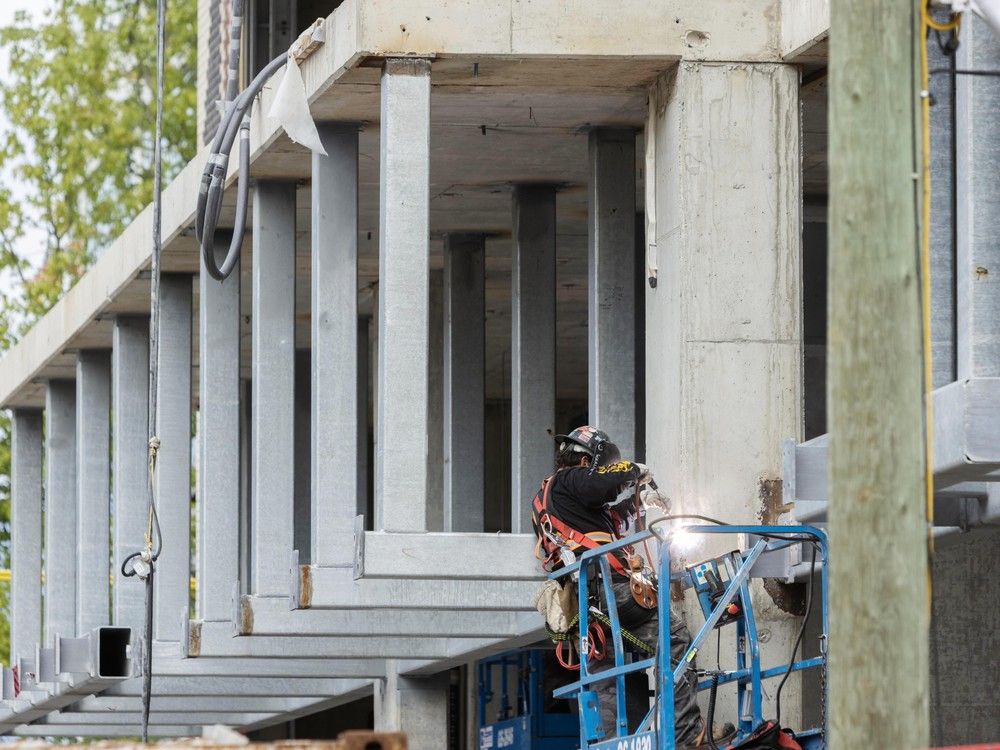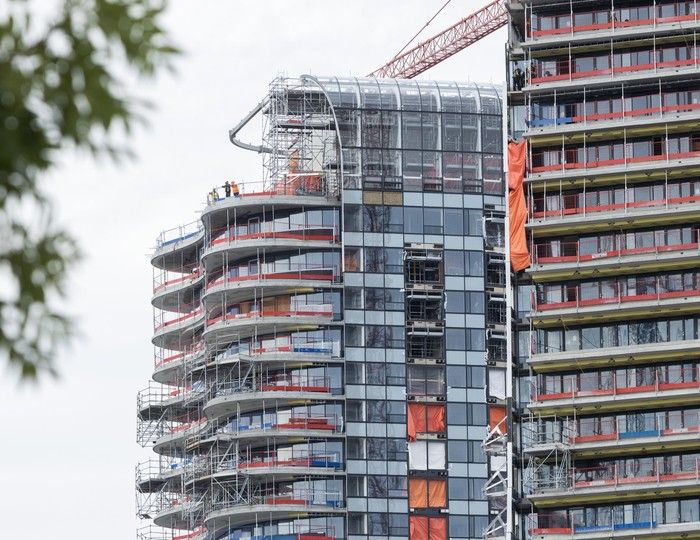
Investors have fled the Metro Vancouver new condo market, leaving piles of empty and unsold units.
And those looking to buy a home to live in aren’t interested in these newer condos, either because they’re too pricey (estimates suggest the bulk of the empty inventory is in the $800,000 to $1.2 million range), too small (in the neighbourhood of 790 to 870 square feet), or both.
No amount of incentives seems to be able to reverse the glut.
What are the projections?
In the first quarter number of 2025, the number of completed and unsold condos and townhomes in Metro Vancouver was 2,304, according to real estate data firm Zonda Urban. By the second quarter, that number climbed to 3,215. Figures for the third quarter will be available in three weeks.
The Canada Mortgage and Housing Corporation has said that the number of completed and unsold condos in Metro Vancouver is double what it was last year at around 2,500. and this number could rise by year’s end.
In the first quarter of 2025, Rennie Intelligence, reported there were 2,503 condos complete and unsold and another 2,337 units in projects nearing completion for a total of 4,840 across Metro Vancouver, a figure that had gone up from 4,700 in January. Rennie excludes townhome units.
Ryan Berlin, senior economist at Rennie Intelligence, which gathers data for marketing condos, said that for the second quarter, it moved away from using initially projected completion dates and looked instead at the progress on actual sites where obvious slowdowns in construction allowed for pushing those projected completion dates out a few years more to 2027 or 2028.
This new approach brought the number of units nearing completion down to 412 and brought the Rennie estimate of empty and unsold units in projects that are nearing completion and completed down from 4,480 in the first quarter to 3,059 in the second.
“For an industry that is so important, it’s still hard to measure what’s going on,” said Andy Yan, director of the City program at Simon Fraser University.
Why is this happening?
Investors are typically motivated to buy a presale condo when they expect the prices to increase upon construction completion and are not as likely to buy when they expect flat or falling prices, said Jon Bennest, vice-president of product development at Zonda.
For an investor, the interest is in a property to rent out. Purchasing a higher-priced unit and renting it out may not be as appealing to an investor now as they may feel there is a better return on their capital elsewhere.
“Returns for condo investors would factor achievable rents versus monthly mortgage payments, property taxes, insurance costs and administrative fees,” Bennest said.
Developers have been focused on building units for investors because they made up about half of all buyers in the years 2021 to 2023. Last year, this fell to 26 per cent and in the first quarter of 2025, investors made up just seven per cent of buyers, according to Rennie Intelligence.
Many investors have gravitated toward smaller condos with tighter layouts, which maximize the return on investment rate. The smaller a unit, the higher the price per square foot on paper and appeal for the next investor.
People looking for a place to actually live, meanwhile, are turning to older condos in the resale market with bigger floor plans or new projects that are low-rises.
What types of units are we talking about and where?
Most of the empty and unsold new condos in Metro Vancouver are units in concrete buildings in Richmond, Burnaby, New Westminster, Vancouver West and Coquitlam, according to Bennest.
Here’s how the empty inventory broke down in the second quarter of 2025: 2,121 (66 per cent) were concrete, highrise condos; 637 (20 per cent) were townhomes; and 457 (14 per cent) were wood frame, low-rise condos.
Of these units, 930 were in Burnaby/New Westminster, 655 were in Richmond/South Delta, 387 were in the Tri-Cities, 313 were in Vancouver West, 205 were in Langley/Cloverdale and 191 were in Central Surrey/North Delta.
Bennest said his firm has not conducted a thorough analysis, but it’s likely that 60 to 75 per cent of the vacant inventory is in the mid to upper price range, with list prices from $1,000 to $1,400 a square foot. With most units falling between 790 and 870 square feet, that translates to about $800,000 to $1.2 million.
The unsold inventory is spread across 90 condominium projects in Metro Vancouver, but 15 of those projects contain almost half of that, said Bennest.

What can be done about it?
The development industry is suggesting that policy changes are needed. These include expanding GST rebates to all new homebuyers, rather than just first-time buyers, for homes priced up to $1.5 million in high-cost markets such as Metro Vancouver.
“This could be limited to 18 months with the option to extend and applied at occupancy rather than the contract date,” said Anne McMullin, president and CEO of the Urban Development Institute, which represents the real estate and building industry.
Other measures could include allowing residential rental properties to be held in RRSPs and adjusting federal foreign buyer rules, as well as the provincial foreign buyer tax, to permit investment in newly built homes with a five-year rental covenant agreement, she said.
The provincial government, however, says it will not be changing the foreign buyer tax.
“We’re eliminating restrictive zoning. We’re bringing in some flexibility around the payment of community-amenity contributions. We’re working alongside homebuilders on a number of their suggestions. But we won’t be reconsidering the foreign buyer tax,” said Housing Minister Christine Boyle.
“We’re not going back to the way things were when condos were being built and left empty all over the city, the Wild West days of foreign speculation were harmful to communities and harmful to housing affordability.”
Another way to move stuck inventory is, of course, to reduce prices.
McMullin said developers are already offering widespread price cuts and incentives.
“The reality is that prices can only be reduced so much before developers start incurring significant losses and in some cases prices have been lowered to the point where the developer is losing on every unit sold. The unsold inventory ties up developer capital, putting future housing projects and jobs at risk, and in some cases, the situation may be too great for some developers to ever recover from,” she said.
With files from Alec Lazenby